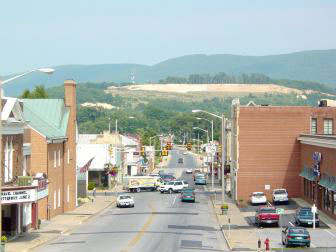Two types of Americans have been emerging the past quarter century since the start of the information age. One would like us to take the lead in the new information age. The other would like us to cling to our industrial-age leadership.
How do you tell the two apart? There’s the quick method, and there’s the long method.
First the long method. Examine their age, socio-economic background and lifestyle. If they are under 40, have a college degree or two, live in one of the nation’s 20 fastest growing metro areas, spend over half their waking hours with a computer or smart phone, work without a suit and tie and have traveled overseas they are likely to be new-age Americans.
On the other hand, if they are over 50, live in a state that’s either been losing population or staying flat, prefer to do business by phone and snail mail and do all their traveling inside the country, they are likely to be old-school Americans.
These rules of thumb leave a big gray area of people who have a mix of new-age and old-school characteristics. It’s especially for these people that the quick method is helpful.
The quick method is easy — just put an Asian in front of them.
If they refer to Asians as “Orientals”, that’s a sure sign that they’re old-school. It doesn’t necessarily mean that they’re bigots, mind you, just that their hearts are in an America that’s receding into the rearview mirror.
Other earmarks of old-schoolers include assuming that an Asian person will be flattered to be addressed with a greeting in a random Asian language, assuming that he is somehow related to or familiar with the local dry cleaners or Chinese restaurants, and assuming that he would be interested to hear about their favorite Chinese restaurants.
That’s because old-schoolers are rapidly devolving to occupations and addresses that require little or no direct contact with professions that attract the majority of Asian Americans — engineering, IT, financial services, medicine and pharmaceuticals, higher education and, more recently, media, advertising and law. Old-schoolers have no reason to know that Asian Americans are rapidly becoming the new backbones of many of the nations most exclusive and affluent communities from Los Altos Hills to Long Island, from Redmond, Washington to Alexandria, Virginia.
Of course these days most of us live and work in places where we’re far more likely to run into non-Asian Americans who don’t need explanations as to who we are and where we come from and what language we speak. It’s a blessing that I still don’t take for granted, after suffering so many years of well-meaning but annoying assumptions about Asians.
So we Asian Americans should resist the temptation to become the new bigots — people who assume that someone is old school just because they are white, not young and hail from outside the major cities.
One of my favorite pastimes is to explore and soak up the atmosphere of remote towns that get minimal city-slicker traffic. It’s partly because they offer the sights and sounds of a fading America that’s being lost to fast-food chains, big-box stores and mini-malls. It’s also because they usually remind me how welcoming and well-intentioned America has generally been toward Asian newcomers.

